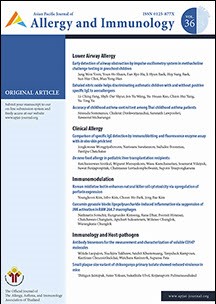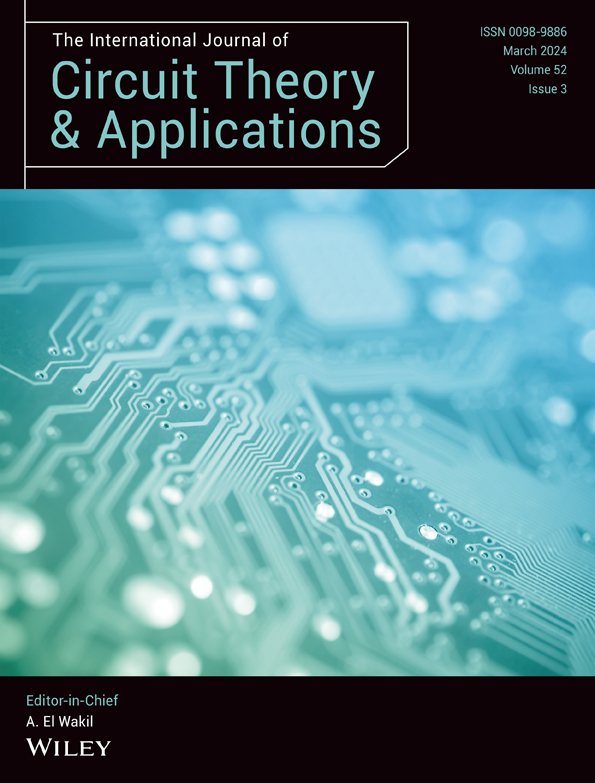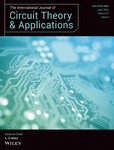
Mechanical and Physical Properties of Concrete Modified with Natural Rubber Latex
Title : Mechanical and Physical Properties of Concrete Modified with Natural Rubber Latex
Researcher : Pheerawat Plangoen
Department : Department of Civil Engineering, Faculty of Engineering, Siam University, Bangkok, Thailand
Email : pheerawat.pla@siam.edu
Abstract : To improve the performance of concrete, natural rubber latex (NRL) is mixed with concrete. It has been observed that rubber latex-modified concrete is more durable than conventional concrete due to superior strength. This study analyzed the physical and mechanical properties of concrete mixed with natural rubber latex. In this research, impacts of natural rubber latex on workability, bleeding of concrete, compressive strength, tensile strength, flexural strength, bond stress and water absorption using concrete with a nominal concrete mix proportion of 1:2:4 (cement : sand : gravel) by volume. Rubber latex-modified concrete compositions containing 0%, 1%, 3%, 5%, 10%, and 15% by weight of cement were prepared or polymer concrete ratio (P/C), and the strength of the structure was tested after 28 days. The results indicated that the polymer cement ratio (P/C) of 1% gives the best performance with 245 ksc compressive strength, 35 ksc tensile strength, 46 ksc flexural strength, 34 ksc bond stress and average water absorption was 0.95%. Based on the results of this study, polymer cement ratio (P/C) of 1% by weight is most recommended to be used with various types of concrete structures.
Key words : natural rubber latex, concrete, mechanical, polymer cement ratio
Website : 2018 5th Global Conference on Polymer and Composite Materials (PCM 2018) http://www.cpcmconf.org/2018/
Download PDF : Mechanical and Physical Properties of Concrete Modified with Natural Rubber Latex
Bibliography : Pheerawat Plangoen. (2018). Mechanical and physical properties of concrete modified with natural rubber latex. In 2018 5th Global Conference on Polymer and Composite Materials (PCM 2018). Kitakyushu, Japan

Needle length for epinephrine prefilled syringes in children and adolescents: Is one inch needle appropriate? (2018)
Title : Needle length for epinephrine prefilled syringes in children and adolescents: Is one inch needle appropriate?
Researcher : Clin.Prof.Suwat Benjaponpitak
Department : Faculty of Medicine, Siam University, Bangkok, Thailand
E-mail : med@siam.edu
Abstract : Background: Intramuscular epinephrine is the first line drug in the treatment of anaphylaxis. This study was to identify the appropriateness of 1 inch needle length for epinephrine prefilled syringes in children.
Methods: Children aged 1 month to 18 years were enrolled. Skin to muscle depth (STMD) and skin to bone depth (STBD) were measured using an ultrasonography at the mid-anterolateral thigh. A 1 inch needle was considered as being appropriate if the STBD was more than 1 inch and the STMD was less than 1 inch.
Results: Seventy five infants, 75 pre-school aged children, 75 school aged children and 147 adolescent were enrolled: 196 (52.7%) children were male. A 1 inch needle length was appropriate for 61% of the infants, for 88% of the preschool children, for 99% of the school aged children and for 95% of the adolescents. Thigh circumference ≥23 cm, BMI ≥16 kg/m2 and BW ≥ 6 kg in infants provided the sensitivity of 74%-96% in predicting the appropriateness of 1 inch needle. In preschool group, thigh circumference ≥25 cm, BMI ≥13.5 kg/m2 and BW ≥ 10 kg provided the sensitivity of 98.5-100% in predicting the appropriateness of 1 inch needle. Thigh circumference ≥ 49 cm in adolescents provided the sensitivity of 75% in predicting that a 1 inch needle was too short.
Conclusion: One inch needle length may not be appropriated for intramuscular injection at thigh in all children. Thigh circumference, BMI and body weight are useful for predictor for using the 1 inch needle.
Key words: Anaphylaxis, children, epinephrine, needle length, intramuscular
Link to Academic article: DOI: 10.12932/AP-020317-0039
Journal : Asian Pacific journal of allergy and immunology
Bibliography : Manuyakorn, W., Bamrungchaowkasem, B., Ruangwattanapaisarn, N., Kamchaisatian, W., & Benjaponpitak, S. (2018, June). Needle length for epinephrine prefilled syringes in children and adolescents: Is one inch needle appropriate?. Asian Pac J Allergy Immunol, 36(2), 113-119. doi: 10.12932/AP-020317-0039. PMID: 28938839.

Noise analysis of electrical circuits on fractal set (2022)
Title : Noise analysis of electrical circuits on fractal set
Researcher : Banchuin, R.
Department : Faculty of Engineering, & Graduated School of IT, Siam University, Bangkok, Thailand
Email : rawid.ban@siam.edu
Abstract :
Purpose
Design/methodology/approach
Findings
Originality/value
Link to article : COMPEL – The International Journal for Computation and Mathematics in Electrical and Electronic Engineering, 2022, 41(5), pp. 1464–1490. https://doi.org/10.1108/COMPEL-08-2021-0269
Journal : COMPEL – The International Journal for Computation and Mathematics in Electrical and Electronic Engineering / in Scopus
Citation : Banchuin, R. (2022). Noise analysis of electrical circuits on fractal set. COMPEL – The International Journal for Computation and Mathematics in Electrical and Electronic Engineering, 41(5), 1464–1490. https://doi.org/10.1108/COMPEL-08-2021-0269
ฐานข้อมูลงานวิจัย มหาวิทยาลัยสยาม : https://e-research.siam.edu/kb/noise-analysis-of-electrical-circuits/

Nonlocal fractal calculus based analyses of electrical circuits on fractal set (2022)
Title : Nonlocal fractal calculus based analyses of electrical circuits on fractal set
Researcher : Banchuin, R.
Department : Faculty of Engineering, & Graduated School of IT, Siam University, Bangkok, Thailand
Email : rawid.ban@siam.edu
Abstract :
Purpose
Design/methodology/approach
Findings
Originality/value
Link to article : COMPEL – The International Journal for Computation and Mathematics in Electrical and Electronic Engineering, 2022, 41(1), 528–549. https://doi.org/10.1108/COMPEL-08-2021-0269
Journal : COMPEL – The International Journal for Computation and Mathematics in Electrical and Electronic Engineering / in Scopus
Citation : Banchuin, R. (2022). Nonlocal fractal calculus based analyses of electrical circuits on fractal set. COMPEL – The International Journal for Computation and Mathematics in Electrical and Electronic Engineering, 41(1), 528–549. https://doi.org/10.1108/COMPEL-08-2021-0269
ฐานข้อมูลงานวิจัย มหาวิทยาลัยสยาม : https://e-research.siam.edu/kb/nonlocal-fractal-calculus/

On the analytical modeling of fractal memelement and inverse memelement (2024)
Title : On the analytical modeling of fractal memelement and inverse memelement
Researcher : Banchuin, R.
Department : Faculty of Engineering, Siam University, Bangkok, Thailand
Email : rawid.ban@siam.edu
Abstract : In this work, an improved analytical model of fractal memelement in which the pinched point shifting has been considered and the original analytical model of fractal inverse memelement have been proposed. These fractal circuit elements are the memelement, and inverse memelement operates based on the principle of electromagnetic in fractal time/space, which must be applied whenever the current flows through fractal media. These models are important because these memory elements can be realized based on the porous material, which is a fractal media. In addition, they can employ self-similarity, which is hard to be simulated by using the traditional models. This is because such self-similarity can be well explained by the fractal set-based model, yet those traditional models are based on the set of real values. Therefore, for deriving the proposed models, the fractal calculus, which is oriented to the fractal set, has been adopted as the mathematical basis. From the analytical and numerical analyses based on the derived models, it has been found that both memelement and inverse memelement can retain their unique frequency characteristics despite being operated based on the abovementioned principle. In addition, their input–output relationships are mathematically differentiable albeit the inputs and outputs themselves are not.
Link to article : International Journal of Circuit Theory and Applications, Version of Record online: 26 March 2024 https://doi.org/10.1002/cta.4023
Journal : International Journal of Circuit Theory and Applications / in Scopus
Bibliography : Banchuin, R. (2024, March 26). On the analytical modeling of fractal memelement and inverse memelement. International Journal of Circuit Theory and Applications, Version of Record online. https://doi.org/10.1002/cta.4023

On The Fractional Domain Analysis of HP TiO2 Memristor Based Circuits with Fractional Conformable Derivative (2021)
Title : On The Fractional Domain Analysis of HP TiO2 Memristor Based Circuits with Fractional Conformable Derivative
Researcher : Banchuin, R.
Department : Faculty of Engineering, & Graduated School of IT, Siam University, Bangkok, Thailand
Email : rawid.ban@siam.edu
Abstract : For the first time, the physical memristor-based circuits i.e., HP TiO2 memristor-based circuits, of both series and parallel structures, have been extensively analyzed in the fractional domain by means of the state of the art yet simple fractional conformable derivative-based differential equations. Different outcome from the hypotheticalmemory element-based previous researches have been obtained. The dimensional consistencies of the fractional derivatives have also been concerned. The often-cited Joglekar’s window function has been adopted for modelling the boundary effect of the memristor and adding more nonlinearity close to the bounds of the memristor’s state variable. The formulated fractional differential equations have been solved and the related electrical quantities have been determined. The computational simulations have been performed. The stability analyses of both circuits have also been presented where it has been mathematically verified that only these HP TiO2 memristor-based circuits are stable always due to the boundary effect which does not exist in hypothetical elements assumed in those previous works. We also point out that that only those HP TiO2 memristor-based circuits of order higher than 3 are capable to exhibit the complex dynamics as such memristor lacks the local activity.
Link to article : Cogent Engineering, 2021, 8(1), 1986198. https://doi.org/10.1080/23311916.2021.1986198
Journal : Cogent Engineering / in Scopus
Citation : Banchuin, R. (2021). On the fractional domain analysis of HP TiO2 memristor based circuits with fractional conformable derivative. Cogent Engineering, 8(1), 1986198. https://doi.org/10.1080/23311916.2021.1986198
ฐานข้อมูลงานวิจัย มหาวิทยาลัยสยาม : https://e-research.siam.edu/kb/on-the-fractional-domain/

On the fractional domain analysis of negative group delay circuits (2024)
Title : On the fractional domain analysis of negative group delay circuits
Researcher : Banchuin, R.
Department : Faculty of Engineering, Siam University, Bangkok, Thailand
Email : rawid.ban@siam.edu
Abstract : In this work, the analysis of negative group delay circuits in fractional domain has been conducted. The low pass and the high pass negative group delay circuits constructed based on passive network have been chosen as our candidate circuits. For performing the analysis in fractional domain, the novel Caputo–Fabrizio derivative-based fractional impedance have been introduced to both circuits. The crucial parameters, the necessary conditions, and the existence conditions of both candidate negative group delay circuits have been formulated. The simulations have been conducted based on the formulated results where the comparisons with the conventional prototypes have been made. The verifications by the proof-of-concept circuits have also been performed. In addition, the effects of variation in the order of fractional impedances have been investigated. In summary, it has been found that considering these negative group delay circuits in the fractional domain, which effectively taking unavoidable nonidealities that cannot be modeled in conventional domain into account, significantly alters their characteristics especially the low pass circuit. However they can retain their low pass and high pass negative group delay functions.
Link to article : International Journal of Circuit Theory and Applications, 2024, 52(3), pp. 1531–1546 https://doi.org/10.1002/cta.3819
Journal : International Journal of Circuit Theory and Applications / in Scopus
Bibliography : Banchuin, R. (2024). On the fractional domain analysis of negative group delay circuitsd. International Journal of Circuit Theory and Applications, 52(3), 1531–1546 https://doi.org/10.1002/cta.3819

On the noise performances of fractal-fractional electrical circuits (2023)
Title : On the noise performances of fractal-fractional electrical circuits
Researcher : Banchuin, R.
Department : Faculty of Engineering & Graduated School of IT, Siam University, Bangkok, Thailand
Email : rawid.ban@siam.edu
Abstract : In this work, the noise performances of the fractal-fractional electrical circuits have been addressed. The nonlocal fractal calculus has been adopted as our mathematical basis. The fractal time component has also been included for the physical measurability of electrical quantities. The derivations of crucial stochastic parameters of circuit responses, which determine their noise performances, have been performed. Numerical simulations have also been conducted where the influences of Hausdorff dimension of the fractal set, orders of fractal-fractional reactive components, and other parameters on the noise performances have been studied. Regardless to any specific circuit, we have found that the noise performances can be improved by increasing the orders of fractal-fractional reactive components. The optimum Hausdorff dimensions, which the best noise performances can be achieved given the orders of fractal-fractional reactive components, have also been calculated. The results proposed in this work serve as the foundation for understanding noise in fractal-fractional electrical circuits and can be extensively applied to large-scaled circuits, for example, the infinite circuit networks and so forth.
Link to article : International Journal of Circuit Theory and Applications, 2023, 51(1), pp. 80–96. https://doi.org/10.1002/cta.3407
Journal : International Journal of Circuit Theory and Applications / in Scopus
Bibliography : Banchuin, R. (2023). On the noise performances of fractal-fractional electrical circuits. International Journal of Circuit Theory and Applications, 51(1), 80–96. https://doi.org/10.1002/cta.3407
ฐานข้อมูลงานวิจัย มหาวิทยาลัยสยาม : https://e-research.siam.edu/kb/on-the-noise-performances/

On the test of novel constitutive relation of capacitor for electrical circuit analysis: a fractal calculus-based approach (2023)
Title : On the test of novel constitutive relation of capacitor for electrical circuit analysis: a fractal calculus-based approach
Researcher : Banchuin, R.
Department : Faculty of Engineering, & Graduated School of IT, Siam University, Bangkok, Thailand
Email : rawid.ban@siam.edu
Abstract :
Purpose
Design/methodology/approach
Findings
Originality/value
Link to article : COMPEL – The International Journal for Computation and Mathematics in Electrical and Electronic Engineering, 2023, 42(2), pp. 506–525. https://doi.org/10.1108/COMPEL-04-2022-0143
Journal : COMPEL – The International Journal for Computation and Mathematics in Electrical and Electronic Engineering / in Scopus
Citation : Banchuin, R. (2023). On the test of novel constitutive relation of capacitor for electrical circuit analysis: a fractal calculus-based approach. COMPEL – The International Journal for Computation and Mathematics in Electrical and Electronic Engineering, 42(2), 506–525. https://doi.org/10.1108/COMPEL-04-2022-0143

Optimal Scheduling of Variable Speed Pumps in Mahasawat Water Distribution Pumping Station (2017)
Title : Optimal Scheduling of Variable Speed Pumps in Mahasawat Water Distribution Pumping Station
Researcher : Tomorn Sunthornnapha
Department : Department of Electrical Engineering, Siam University
E-mail : tomo.soo@siam.edu
Abstract : An optimum energy conservation technique for water treatment plant, both in term of costs and environmental impacts, have been studied and implemented primarily at Mahasawat Water Distribution Pumping Station, Thailand. This article proposes an optimum scheduling of 4-variable speed pumps operating under their actual conditions. We apply affinity laws with simple measures of performance; delivery pressure, power, and speed; to a group of pumps before scheduling them in parallel as 4-3-2 pump configuration. Energy costs are computed in term of specific energy consumptions (SEC’s) to compare them for all configurations. This proposed technique is tested and the test results demonstrated that it can reduce energy consumption by more than 12%.
Keywords : energy conservation; variable speed pumps;
water distribution pumping; specific energy consumption
Download PDF: Optimal Scheduling of Variable Speed Pumps in Mahasawat Water Distribution Pumping Station
Link to Conference: The 2017 4th International Electrical Engineering Congress, Pattaya, Thailand, 8-10 March 2017.
Bibliography : Sunthornnapha, T. (2017). Optimal Scheduling of Variable Speed Pumps in Mahasawat Water Distribution Pumping Station. In The 2017 4th International Electrical Engineering Congress (iEECON 2017), 8-10 March 2017 (pp.145-148). Pattaya: Thailand.